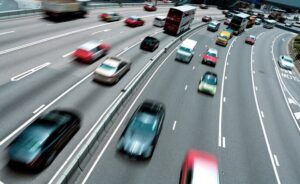
More and more, artificial intelligence (AI) has become a popular and widespread technology with applications in many fields, from smart manufacturing and smart city. Also, one area which can benefit hugely from AI is transportation.
Artificial Intelligence and its branch Machine Learning are enabling transportation agencies, cities and soon private car owners to harness the power of modern compute and communication technologies and make mobility a much safer and greener activity.
High-end commercial CPUs, GPUs and IoT communication technologies such as LTE, 5G and LPWAN have created possibilities of several applications of Big Data and AI in the transportation sector.
Some examples of how AI is applied in transportation are as follows: autonomous vehicles, traffic management solutions, smartphone apps, passenger transportation and law enforcement, whereby AI could help to detect and identify when a driver is drinking or texting behind the wheel and alert any officers within the local area to intercept them.
-
Challenges that AI can solve
There are several challenges that are persistent throughout the transportation industry and that have plagued this sector ever since its inception, among them safety, reliability, efficiently and pollution. How AI can address each of those issues is summarized as follows.
1. Safety
Safety is perhaps the most important challenge in transportation, as passengers and customers need to know that they or their belongings are in safe hands. In this regard, AI can be of help.
Technology has made increasing safety levels much easier over the years and now, with the advent of AI technologies that are becoming increasingly adopted by businesses and enterprises operating within the transportation arena, safety levels could about to reach even higher peaks.
2. Reliability
Another top consideration of many businesses or enterprises operating within travel or transportation is the reliability of their services or vehicles, as passengers are much less likely to travel with operators or in vehicles that look or are known to be unreliable.
Use of artificial intelligence in public transportation to enhance reliability of the service is one of the key drivers of its adoptions within the industry. Using artificial intelligence technologies, it is hoped that the ability to process and predict data and outcomes in much larger quantities than humans are capable of will allow travel and transport operators, as well as eventually the public themselves, the ability to schedule public and private transportation services in a significantly improved manner.
3. Efficiency
Being energy-efficient is an increasingly important aspect of travel and transport as passengers’ journeys and commutes become ever more integrated with technology, adding that while this undoubtedly has its benefits, it also means new technologies will need to manage their power supplies much more efficiently.
Artificial intelligence technologies will undoubtedly enhance the efficiency of the systems it integrates with; however, power will need to be used much more intelligently by all of the systems in play in order to truly utilize the potential of newer technologies.
4. Pollution
With a large percentage of the world becoming increasingly environmentally focused, drastic reduction of polluting substances within the travel and transportation industries is required in order to secure their long-term sustainability. In this regard, AI can also help.
Artificial intelligence could play a big role in developing and deploying new and innovative ways in which to deal with pollution as well as helping to enable scientists and engineers to come up with much more environmentally friendly methods to power and run vehicles and machinery for travel and transportation.
Source: a&s Magazine



































































